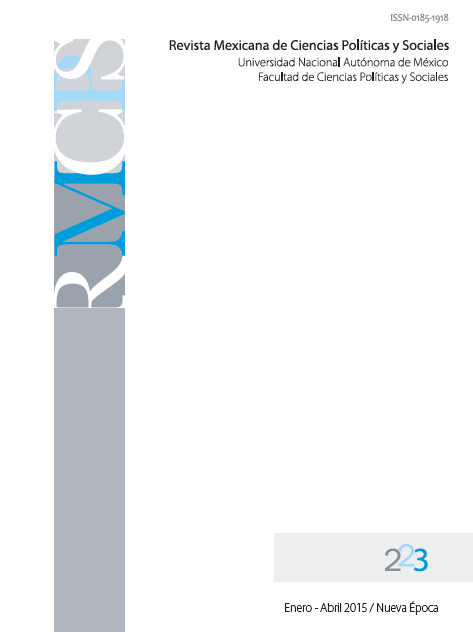Gender Wage Inequality Measured Using Quantile Regression: The Impact of Human, Cultural and Social Capital
Main Article Content
Abstract
Downloads
Article Details
Citas en Dimensions Service
References
Baptista, Dulce Benigna Dias Alvarenga, (1998) Diferenciais de rendimento e discriminação por sexo no mercado de trabalho brasileiro na década de 90. Monografia. Faculdade de Ciências Econômicas, Universidade Federal de Minas Gerais, Belo Horizonte. Disponible en: <http://www.abep.nepo.unicamp.br/docs/anais/pdf/2000/Todos/diferenciais%20de%20Rendimento%20e%20Discrimina%C3%A7%C3%A3o%20por%20Sexo%20no%20Mercad.pdf> [Consultado el 2 de octubre de 2014].
Barros, Ricardo; Carvalho, Mirela de; Franco, Samuel y Rosane Mendonça, (2006) “Consequências e causas imediatas da queda recente da desigualdade de renda brasileira” en Texto para Discussão. Núm. 1201. Rio de Janeiro, IPEA, Julho.
Barros, Ricardo y Rosane Mendonça, (1996) Os determinantes da desigualdade no Brasil. A Economia Brasileira em Perspectiva 1996. Rio de Janeiro, IPEA.
Becker, Gary, (1965) Human Capital: A Theoretical and Empirical Analysis with Special Reference to Education. Nueva York, Columbia University Press.
Bruschini, Maria Cristina Aranha y María Rosa Lombardi, (1996) “O trabalho da mulher brasileira nos primeiros anos da década de 90” en Encontro nacional de estudos populacionais. Núm. 10. Caxambu. Belo Horizonte, ABEP.
Budig, Michelle y Melissa Hodges, (2010) “Differences and Disavantange: Variation in the Motherhood Penalty across White Women’s Earnings Distribution” en American Sociological Review. Vol. 75, núm. 5, pp.: 705-728.
Cade, Brian y Barry Noon, (2003) “A Gentle Introduction to Quantile Regression for Ecologists” en Frontiers in Ecology and the Environment1. Vol. 1, núm. 8, pp.: 412-420.
Camargo, José Márcio y Franklin Serrano, (1983) “Os dois mercados: homens e mulheres na indústria brasileira” en Revista Brasileira de Economia. Vol. 37, núm. 4, pp.: 435-448.
Coleman, James, (1988) “Social Capital in the Creation of Human Capital” en American Journal of Sociology. Vol. 94. Supplement: Organizations and Institutions: Sociological and Economic Approaches to the Analysis of Social Structure, pp.: 95-120.
Correll, Shelley; Bernard, Stephen e In Paik, (2007) “Getting a Job: Is There a Motherhood Penalty?” en American Journal of Sociology. Vol. 112, núm. 5, pp.: 1297-1339.
DiPrete, Thomas y Claudia Buchmann, (2006) “Gender-Specific Trends in the Values of Education and the Emerging Gender Gap in College Completion”. Disponible en: <http://www.columbia.edu/~tad61/demog100205.pdf> [Consultado el 2 de octubre de 2014].
England, Paula, (2005) “Gender Inequality in Labor Markets: The Role of Motherhood and Segregation Social Politics” en International Studies in Gender, State and Society. Vol.12, núm 2.
Giddens, Anthony, (2005) The New Egalitarianism. Cambridge, Polity Press.
Goldin, Claudia, (1990) Understanding the Gender Gap: An Aconomic History of American Women. Nueva York, Oxford University Press.
Goldthorpe, John, (2000) On Sociology: Numbers, Narratives and the Integration of Research and Theory. Oxford, Oxford University Press.
Hoffman, Rodolfo y Eugênia Troncoso Leone, (2004) “Participação da mulher no mercado de trabalho e desigualdade da renda domiciliar per capita no Brasil: 1981-2002” en Nova Economia. Vol. 14, núm. 2, pp.: 35-58.
Instituto Brasileiro de Geografia e Estatística, (2007) “Pesquisa Nacional por Amostra de domicílios, 1997-2007” en Consórcio de Informações Sociais. Rio de Janeiro, IBGE. Disponible en: Acesso em 15/02/2012 [Consultado el 2 de ocutbre de 2014].
Instituto do Milênio, (2008) A dimensão social das Desigualdades: sistemas de indicadores de estratificação e mobilidade social. Río de Janeiro, CNPq.
Kassouf, Ana Lúcia, (1998) “Wage Gender Discrimination and Segmentation in the Brazilian Labor Market” en Economia Aplicada. Vol. 2, núm. 2, abril/junio, pp.: 243-269.
Koenker. Roger y Gilbert Basset.G. (1978) “Regression Quantiles” em Econometrica. Núm. 46, núm. 1, pp.: 33-50.
Leme, María Carolina y Simone Wajnman, (1999) “Efeitos de período, coorte e ciclo de vida na participação feminina no mercado de trabalho brasileiro”. Mimeo.
Mincer, Jacob, (1958) “Investment in Human Capital and Personal Income Distribution” en Journal of Political Economy. Vol. LXVI, núm. 4, pp. 281-302.
Parsons, Talcott, (1954) An Analytical Approach to the Theory of Social Stratification: Essays in Sociological Theory. Glencoe. Free Press.
Polachek, Solomon y Stanley Siebert, (1994) “Gender in the Labor Market” en David Grusky, Social Stratification: Class, Race and Gender in Sociological Perspective. Bolder, Westview Press.
Santos, Ribeiro, (2009) “Desigualdades de rendimentos e discriminação por gênero no Brasil”. Dissertação de Mestrado. UFRGS.
Schultz, Theodore, (1961) “Investment in Human Capital” en The American Economic Review. Vol. 51, núm. 1, pp.: 1-17.
Dulci, Tomás e Xavier, (2005) “Interfaces dos capitais; humano, cultural e social na situação ocupacional e nos rendimentos dos indivíduos” en Aguiar, Neuma (org.), Desigualdades sociais, redes de sociabilidade e participação política. Belo Horizonte, Editora UFMG, pp.: 73-100.

La Revista Mexicana de Ciencias Políticas y Sociales publicada por la Universidad Nacional Autónoma de México se distribuye bajo una Licencia Creative Commons Atribución-NoComercial-SinDerivar 4.0 Internacional.
Basada en una obra en http://www.revistas.unam.mx/index.php/rmcpys/
La RMCPyS autoriza a sus colaboradores que suban una copia de sus trabajos publicados en sus webs personales o en cualquier repositorio de acceso abierto, siempre y cuando se mencione específicamente a la Revista Mexicana de Ciencias Políticas y Sociales como fuente original de procedencia, citando el año y número del ejemplar respectivo y añadiendo el enlace a la página web donde este órgano editorial puede ser consultado in toto, de manera abierta y gratuita en: <www.revistas.unam.mx/index.php/rmcpys>.
Las y los lectores tienen libertad para:
Compartir, copiar y redistribuir el material en cualquier medio o formato.
El licenciante no puede revocar estas libertades en tanto usted siga los términos de la licencia.
De acuerdo con los siguientes términos:
- Atribución: la/el lector/a debe reconocer el crédito de una obra de manera adecuada, proporcionar un enlace a la licencia, e indicar si se han realizado cambios. Puede hacerlo en cualquier forma razonable, pero no de forma tal que sugiera que tiene el apoyo del licenciante o lo recibe por el uso que hace.
- No comercial: la/el lector/a no puede hacer uso del material con fines comerciales.
- Si se mezcla, transforma o se desarrolla a partir de la obra licenciada, no se permite la distribución del material modificado.
Cargos por gestión de artículos
La Revista Mexicana de Ciencias Políticas y Sociales NO cobra tarifas por recibir, procesar o publicar los artículos (Article Processing Charge [APC]) enviados por los autores.

